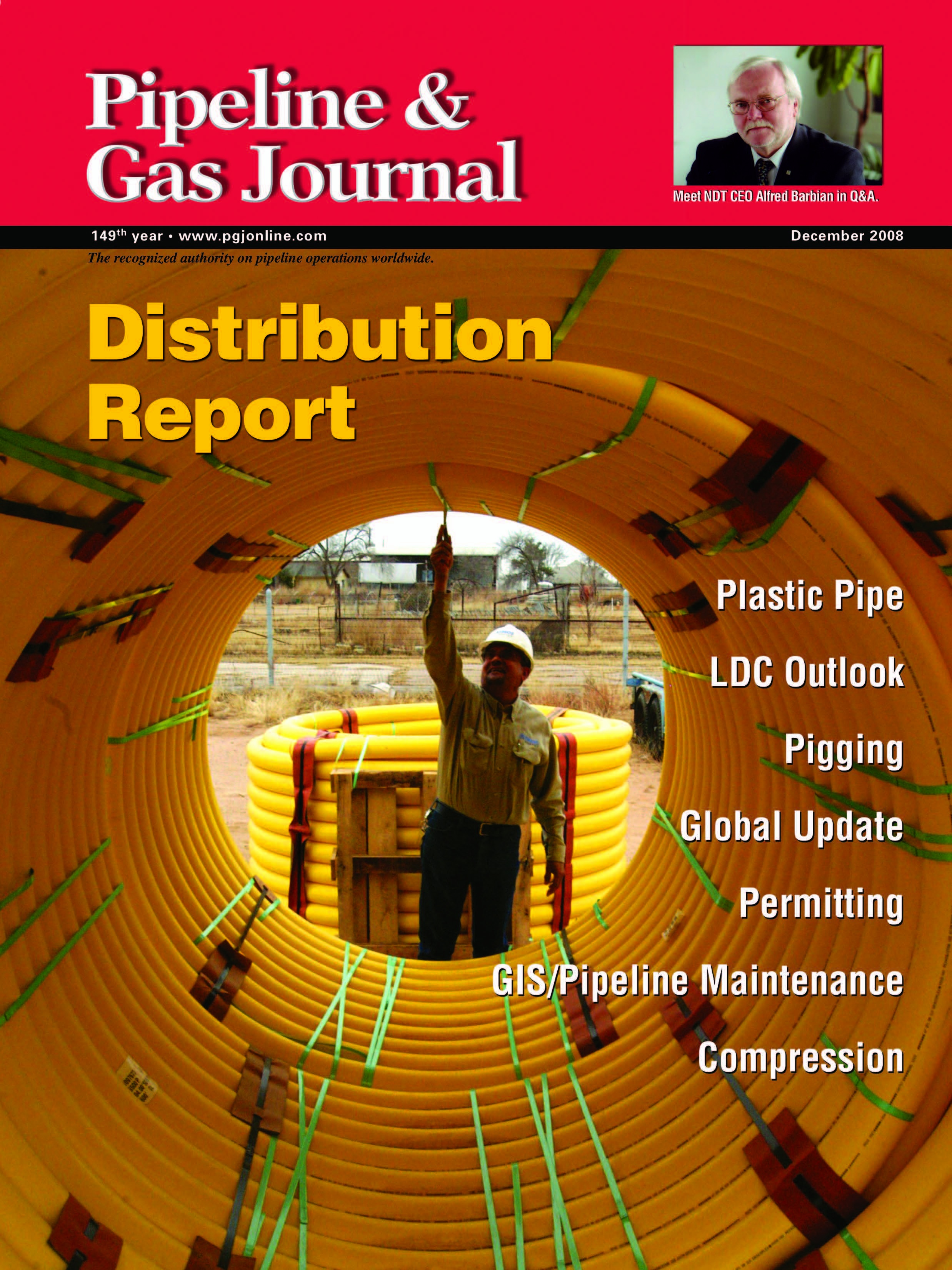
December 2008 Vol. 235 No. 12
Features
The inventory, evaluation and treatment of cultural resources represent a significant challenge for those charged with siting and permitting natural gas pipelines. Recent pipeline projects in the U.S. have involved environmental study corridors that are extensive, resulting in the identification of large numbers of cultural resources. Fortunately, the Federal Energy Regulatory Commission (FERC) has attempted to reduce the number of steps required to achieve licensing for projects under its oversight. Specifically, the FERC has introduced a program called the Pre-filing Process.
Polyethylene (PE) is the primary material used for gas pipe applications. Because of its flexibility, ease of joining and long-term durability, along with lower installed cost and lack of corrosion, gas companies want to install PE pipe instead of steel pipe in larger diameters and higher pressures. As a result, rapid crack propagation (RCP) is becoming a more important property of PE materials.
Duke Energy uses a GE Frame 5 gas turbine to drive a compressor used in a natural gas pipeline. The intake system required retrofitting with a silencer to meet current regulations and the need also existed to reduce particle contamination. The pressure drop in the initial design was found to be 8.5 inches of water, much higher than the design specification which was 5.3 inches.
TechNotes
As traditional natural gas reservoirs are depleted, producers are forced to target lower pressure wells that typically produce a “wet gas.”
Colfax Corporation says its line of rotary positive displacement (PD) screw pumps moves crude oil reliably while responding to growing industry demand for higher energy efficiency and greater environmental responsibility.

- Kinder Morgan Proposes 290-Mile Gas Pipeline Expansion Spanning Three States
- Valero Plans to Shut California Refinery, Takes $1.1 Billion Hit
- Three Killed, Two Injured in Accident at LNG Construction Site in Texas
- Tallgrass to Build New Permian-to-Rockies Pipeline, Targets 2028 Startup with 2.4 Bcf Capacity
- TC Energy Approves $900 Million Northwoods Pipeline Expansion for U.S. Midwest
- U.S. Pipeline Expansion to Add 99 Bcf/d, Mostly for LNG Export, Report Finds
- Enbridge Adds Turboexpanders at Pipeline Sites to Power Data Centers in Canada, Pennsylvania
- Great Basin Gas Expansion Draws Strong Shipper Demand in Northern Nevada
- Cheniere Seeks FERC Approval to Expand Sabine Pass LNG Facility
- US Poised to Become Net Exporter of Crude Oil in 2023



